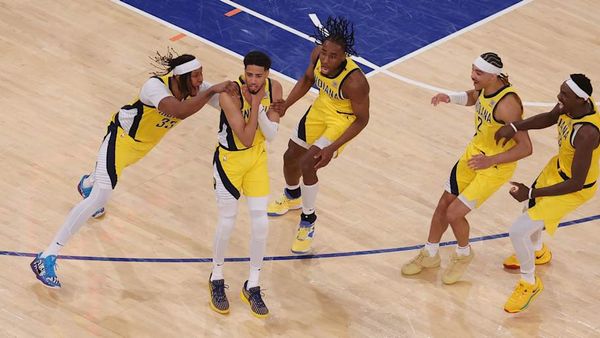
It’s virtually impossible to read more than 10 words by Neil Gaiman and not wish he would tell you the rest of the story. He is a thesaurus of myth, both original and traditional, as comfortable appraising the science fiction of Douglas Adams or co-authoring fantasy with Terry Pratchett as he is reimagining the story of Orpheus and Eurydice or creating a bleakly funny serial killers’ convention in small-town America. And that’s before you get on to his children’s picture books. Eclectic doesn’t quite cover it.
Still, it comes as something of a shock that he begins this most recent book with the words, “If I had to declare a favourite [sequence of myth], it would probably be for the Norse myths.” Surely Gaiman loves the Greeks the most? All those gorgeous Sandman comics, playing around with Greek mythology and the strange space between personification and abstraction: Dream, Death, Desire. Gaiman’s Sandman exists in a world so dense and dark that the stories haunt his readers long after the comic is put back on the shelf.
But now it turns out that it’s Odin he loves best. Gaiman explains, “My first encounter with Asgard [one of the nine worlds of Norse mythology] and its inhabitants was as a small boy, no more than seven, reading the adventures of The Mighty Thor as depicted by American comics artist Jack Kirby.” This collection of Norse myth is for an audience even more likely to know the Norse gods through the Marvel universe than Gaiman was: Chris Hemsworth has been appearing as Thor at regular intervals on multiplex screens for the past six years.
And Norse mythology is surely due a retelling. As Gaiman says, “I’ve tried my best to retell these myths and stories as accurately as I can, and as interestingly as I can.” It’s in service of the former goal that the book begins with a section called “The Players”, so we can meet Odin, Thor and Frey, as well as Mjollnir (Thor’s hammer), Gungnir (Odin’s spear) and Skidbladnir (Frey’s collapsible ship). Gaiman is an egalitarian explainer too, as likely to devote a little page-space to Ratatosk, the malicious, gossipy squirrel – who lives in Yggdrasil, “a mighty ash tree, the most perfect and beautiful of all trees”, and takes messages between the corpse-eating dragon at its root and the stern eagle in its branches – as to any Asgardian.
The malevolent squirrel is a neat illustration of how alien much of Norse myth is to most of us. Greek myth has been so entirely absorbed into everything from neoclassicism to psychotherapy that we barely even register when we refer to an Oedipus complex, a narcissistic personality disorder or an achilles heel. But although Tolkien took the dwarves and elves of Norse myth to populate Middle Earth, they have not penetrated our culture to anything like the same extent.
Perhaps it’s because Norse myth is harder to read. Gaiman tells the story of Thor’s visit to the land of the giants. Thor undergoes three trials of strength, but fails each one. He tries to wrestle an old woman, Elli, who turns out to be old age itself. So far, so easy: we are all conquered by the frailty of age, if we’re lucky to live that long. But Thor also fails to lift a cat, which turns out to be neither a cat nor a human weakness, but a giant snake. Just when we think we’re on firm metaphorical ground, a snake comes along and confuses everything. Maybe Freud was right all along.
The halls of Valhalla have been crying out for Neil Gaiman to tell their stories to a new audience. Hopefully this collection will be just the beginning.
• Norse Mythology by Neil Gaiman is published by Bloomsbury (£20). To order a copy for £15 go to bookshop.theguardian.com or call 0330 333 6846. Free UK p&p over £10, online orders only. Phone orders min p&p of £1.99







